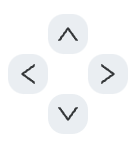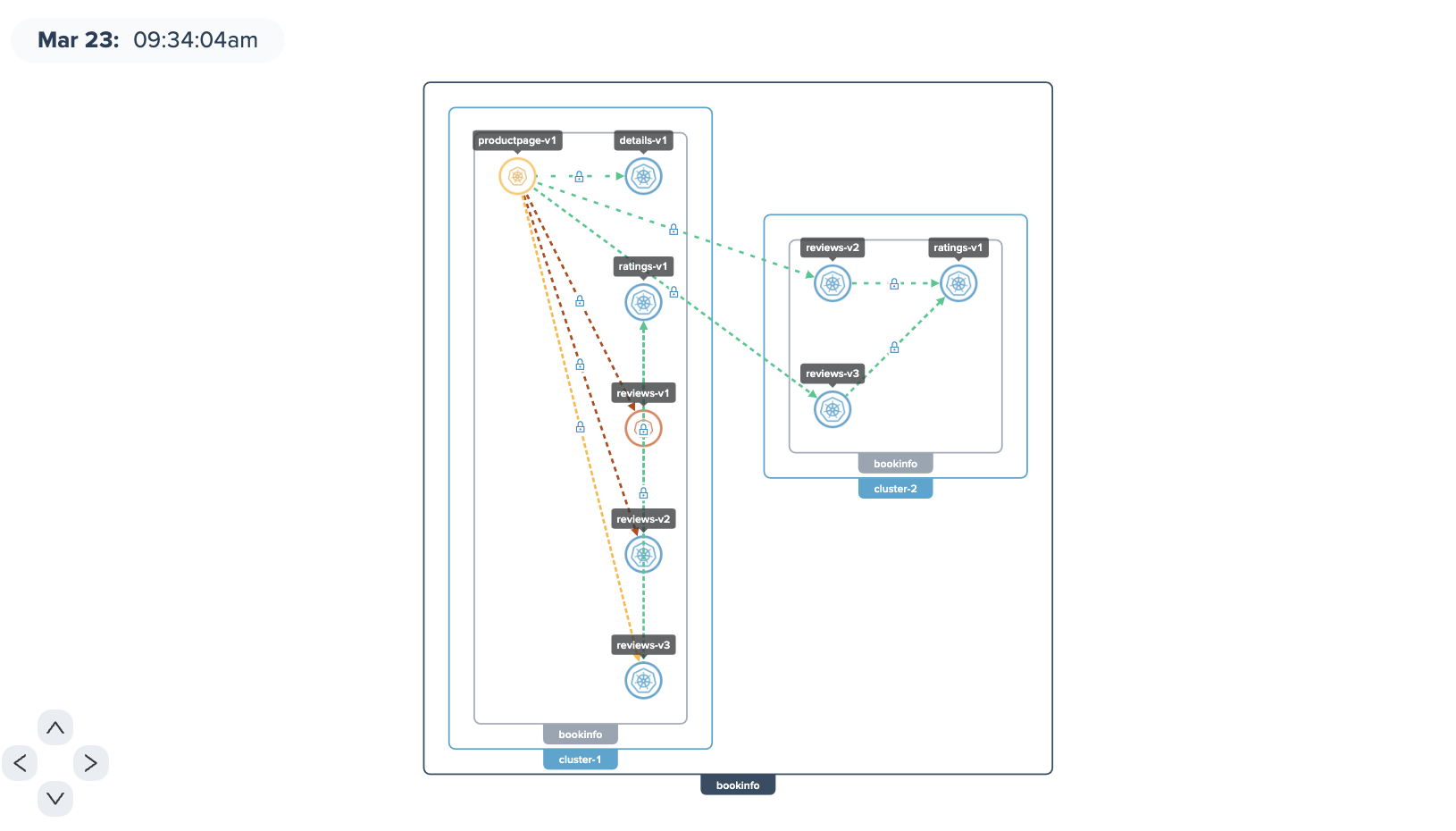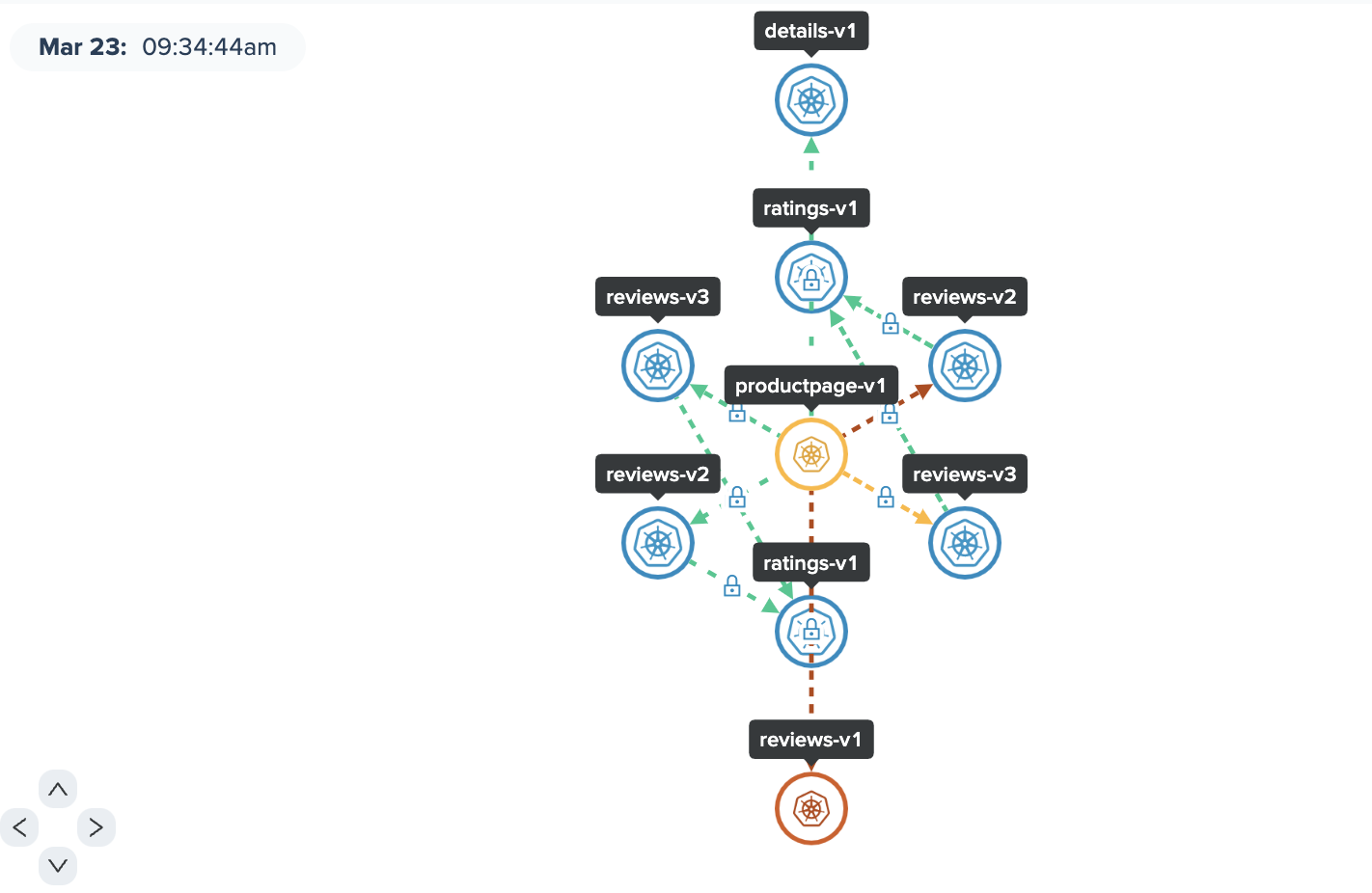Explore the UI
After connecting to the Gloo UI, explore the basic layout. Review your Gloo Network and Cilium components, insights, your security posture, and more.
The UI offers a view-only experience. Users cannot modify resources.
Launch
The Gloo UI is served from the gloo-mesh-ui service on port 8090. When you have access to the management cluster, you can launch the Gloo UI from your local machine. You can connect by using the meshctl or kubectl CLIs.
Open the Gloo UI. The Gloo UI is served from the
gloo-mesh-uiservice on port 8090. You can connect by using themeshctlorkubectlCLIs.- meshctl: For more information, see the CLI documentation.
meshctl dashboard - kubectl:
- Port-forward the
gloo-mesh-uiservice on 8090.kubectl port-forward -n gloo-mesh svc/gloo-mesh-ui 8090:8090 - Open your browser and connect to http://localhost:8090.
- Port-forward the
- meshctl: For more information, see the CLI documentation.
- Optional: If authentication is enabled, sign in.
- Review the dashboard.
Home
View the health and performance of your Gloo components and Cilium setup, and view recommendations to harden your setup by using the Dashboard and Insights pages.
Dashboard
The Gloo UI dashboard provides an at-a-glance overview of the health of your Gloo components, your Cilium setup, and different tiles to quickly determine the security posture, compliance, inventories, and health of your Gloo Network environment.
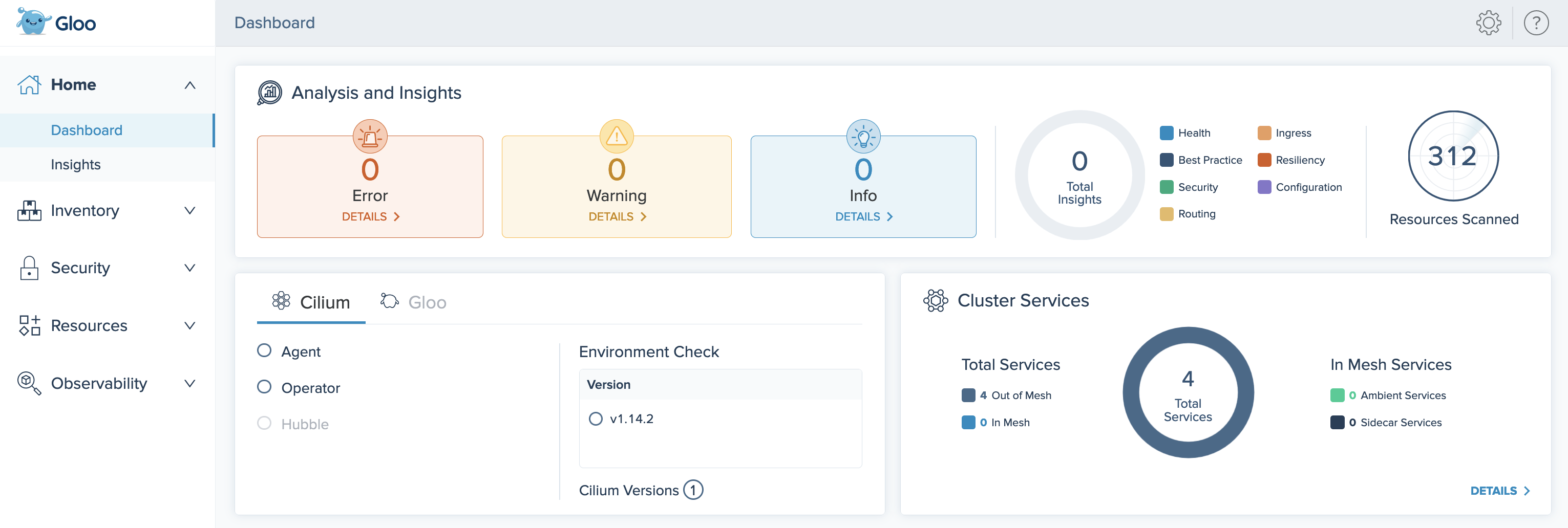
Insights
Gloo Network comes with an insights engine that automatically analyzes your Cilium setup for health issues. Then, Gloo shares these issues along with recommendations to harden your Cilium setup. The insights give you a checklist to address issues that might otherwise be hard to detect across your environment. For an overview of available insights, see Insights.
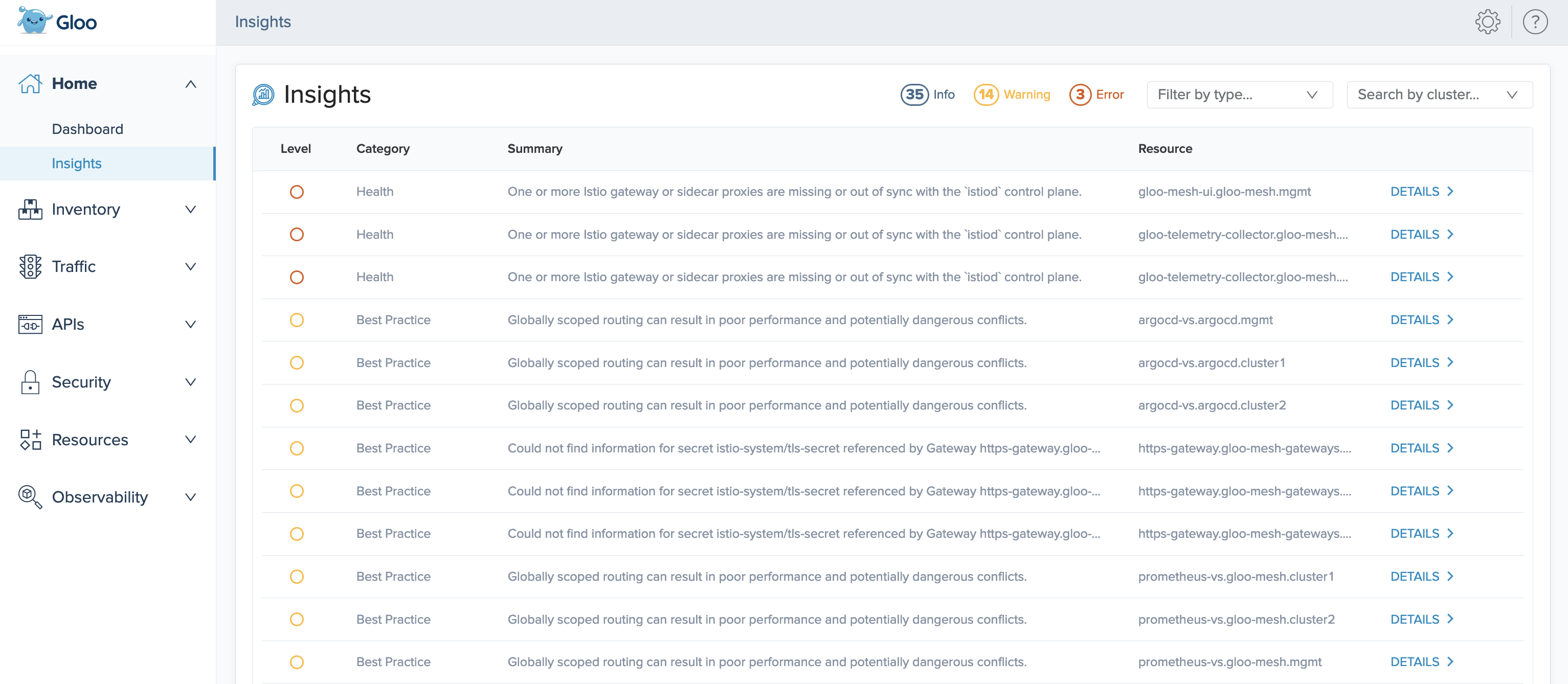
Inventory
The Inventory section provides an at-a-glance look at the health of registered clusters and discovered services that make up your Gloo environment.
Clusters
On the Clusters page, review basic details of each cluster that you registered with the Gloo management plane.
To filter clusters by the cluster’s Gloo Network installation health, click the Healthy and Unhealthy buttons. You can also use the Sort by Name dropdown or the search bar to filter clusters by name.

Figure: Clusters page Click More Details to see a more detailed dashboard for the cluster. This dashboard can help you find errors in your Gloo and Istio setups.
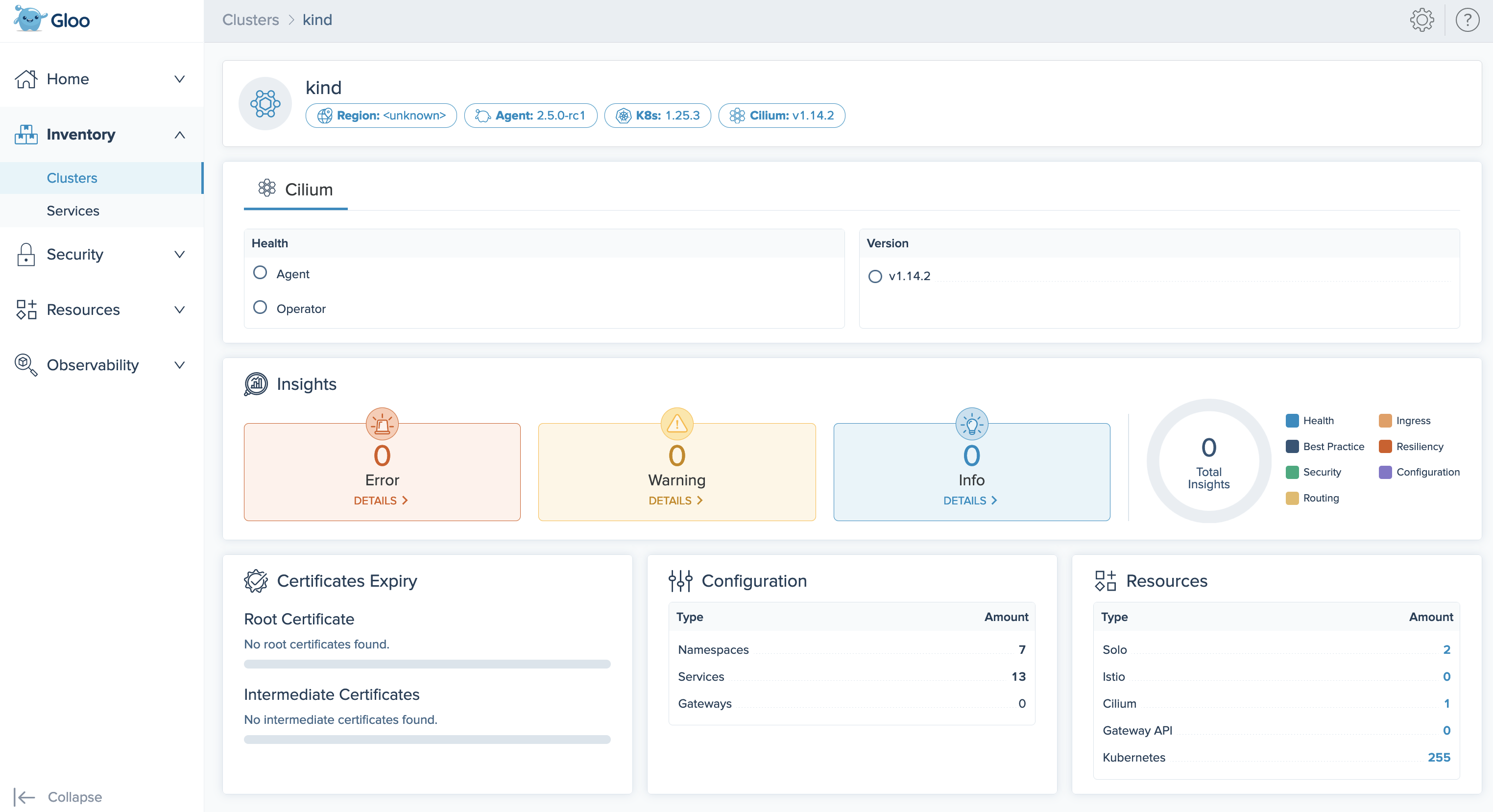
Figure: Cluster details page
Security
Security insights
The Dashboard and Security Insights pages of the Gloo UI can help you review the overall security posture of your Istio setup, including insights and recommendations regarding your certificates, encrypted traffic, FIPS compliance, and more.
For more information, see Review your security posture.
Resources
Find an overview of resources that are deployed in your cluster and use the filter options in the Gloo UI to find the resource that you need.
Solo
View the Gloo resources in your Gloo Network environment, such as Dashboard resources. Use the Filter by options to filter the list by resource type. To view the YAML configuration for a resource, click View YAML.
Gateway API
View all Kubernetes Gateway API resources in your environment. For more information, see the Kubernetes Gateway API guide in the Istio documentation.
Kubernetes
View all Kubernetes resources in your cluster, such as services, service accounts, secrets, or cluster roles. Use the Filter options to filter the list by namespace and Kubernetes resource type. To view the YAML configuration for a resource, click View YAML.
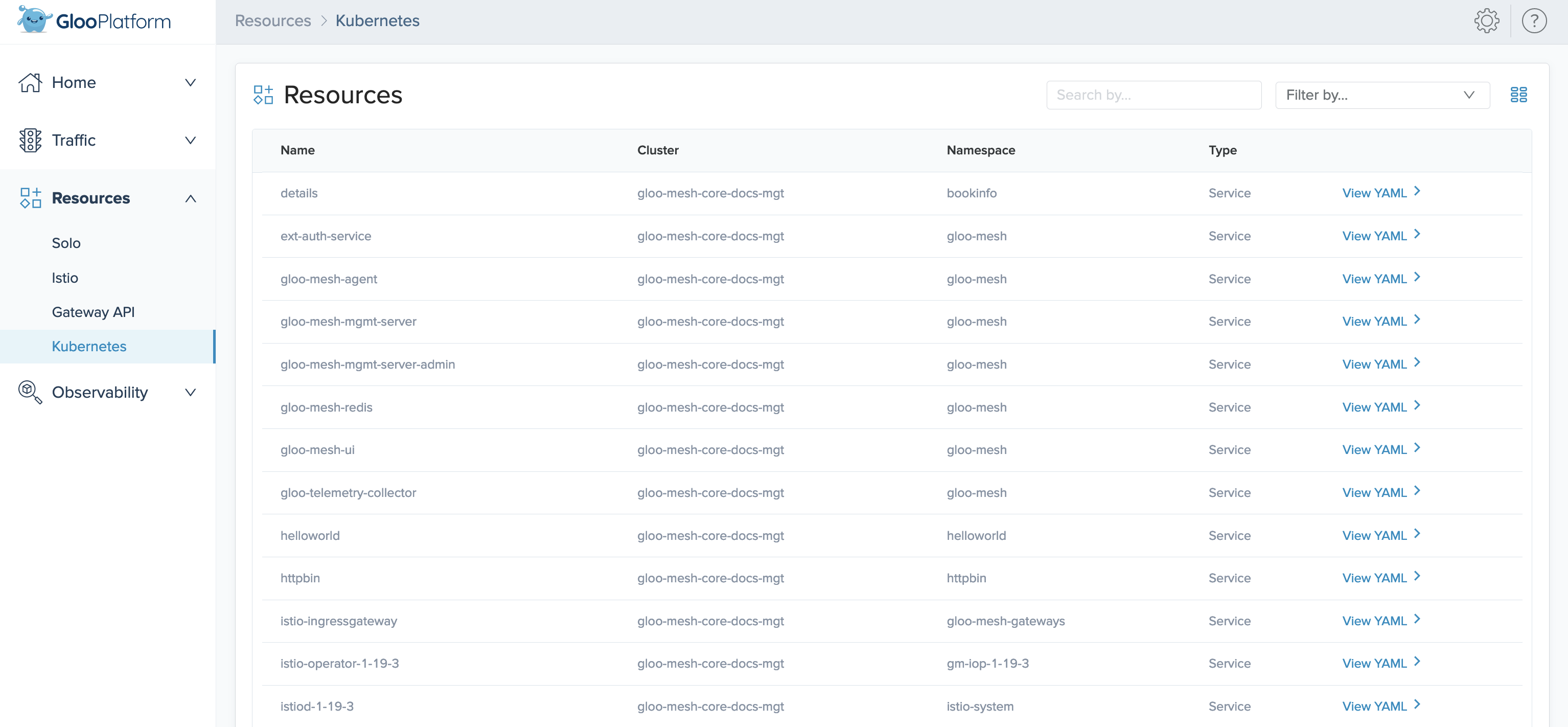
Observability
The Gloo UI consumes telemetry data from Prometheus and Jaeger and visualizes this data in the Observability section.
Graph
The Gloo UI includes a Graph page to visualize the network traffic that reaches your service mesh. The graph is based off Prometheus metrics that the agents on each workload cluster send the management cluster.
Layout settings
From the footer toolbar, click Layout Settings. Toggle on or off the following settings.
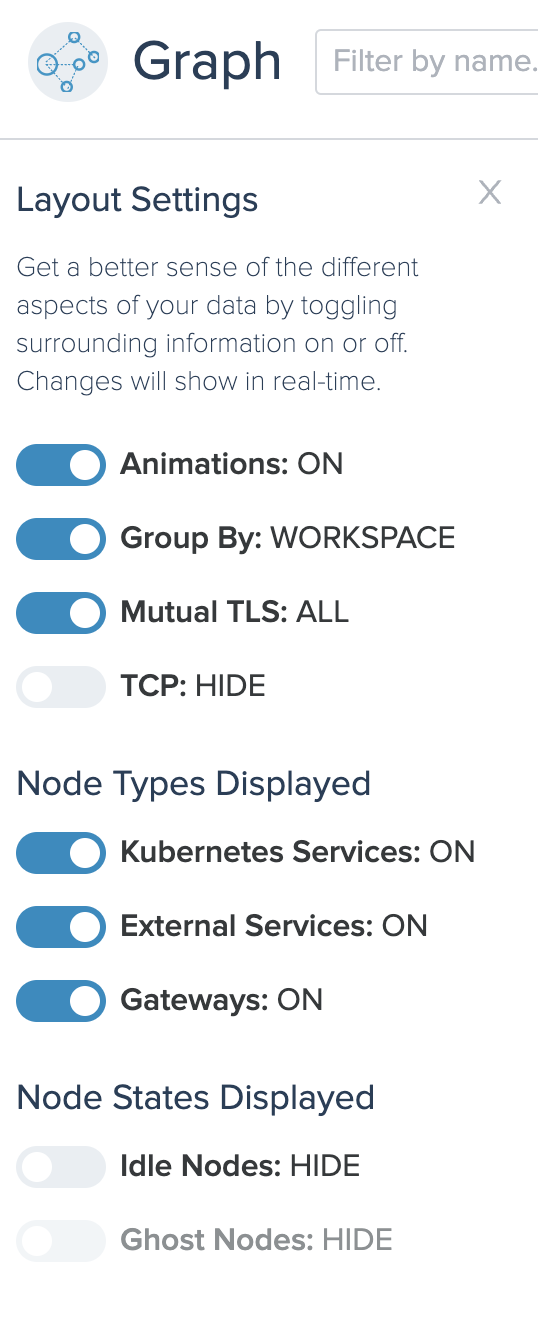
Header, filter, and footer toolbars for navigation
Legend
From the footer toolbar, click Show Legend.
Node Types describes the icons that are used for the application “nodes” of the graph. For example, a node might be a Kubernetes service, Istio gateway, external service, or an attached virtual machine (VM). (Note that nodes represent your apps, not Kubernetes compute nodes.)
Node States and Edges show whether a service’s traffic behaves normally or not, as indicated by a color or icon.
| Color or icon | State | Description |
|---|---|---|
| Blue | Normal | The node sends and responds to traffic as expected. |
| Red | Danger | The node has some sort of failure. For example, a policy might be applied to a route that blocks traffic to a service. |
| Yellow | Warn | The node has some sort of degraded traffic. For example, a policy might be applied to a route that rate limits traffic to a service. Most of the requests are successful, but some are not. |
| Gray | Idle | The node does not yet accept or send traffic. For example, the deployment might be pending. |
| Dashed, black line | L7 | The traffic between nodes is sent over Layer 7 (application). For this traffic, you can apply L7 HTTP/HTTPS policies that are supported in Gloo Mesh Enterprise and Gloo Mesh Gateway only. |
| Solid, navy line | L4 | The traffic between nodes is sent over Layer 4 (transport). |
| Colorful triangles | Failure, Healthy, Degraded, or Idle | The connection is in a state of failure, healthy, degraded, or idle, depending on the color. Try describing the resources in your cluster to troubleshoot further. |
| Blue lock icon | mTLS applied | Service isolation is enabled for the traffic, with communication secured via mTLS. You can change service isolation settings via an access policy for a specific destination, or for the entire workspace via the workspace settings. |
| Cilium icon | Enforced by Cilium | The traffic connection is enforced by the Solo distribution of the Cilium CNI. |
| Istio icon | Enforced by Istio | The traffic connection is enforced by Istio. |
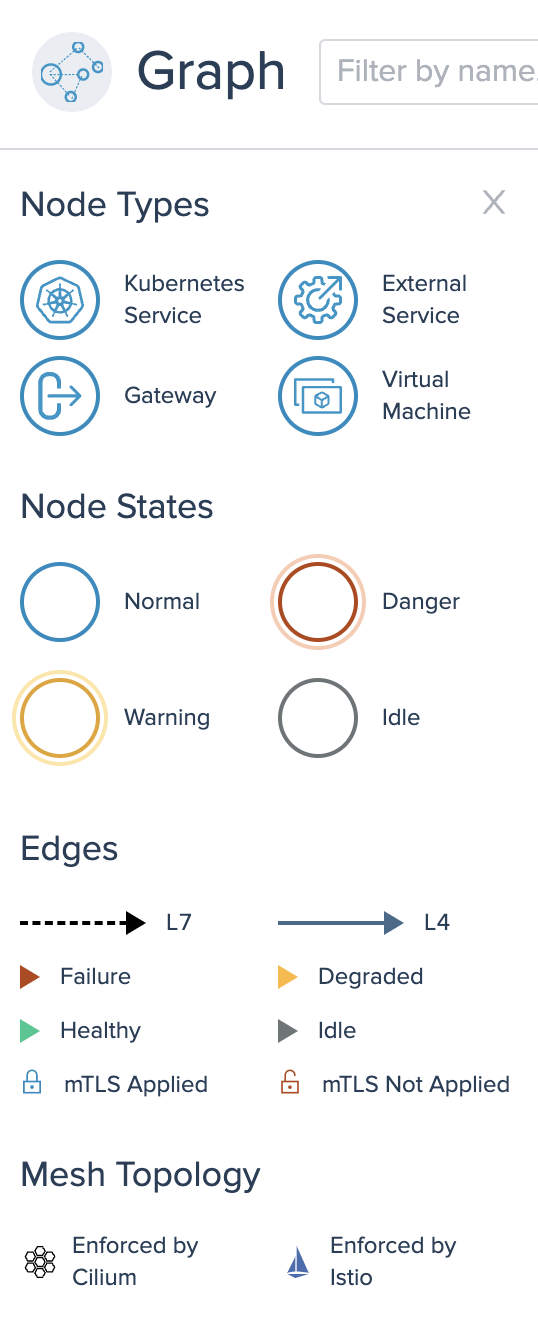
Networking views
Logs
You can use the Gloo UI log viewer to see the logs of Gloo components, such as the Gloo management server, the Gloo telemetry collector agent, or the Gloo UI. These logs can help you monitor the health of your Gloo components and troubleshoot issues.
To view logs, use the log viewer filter options to select the cluster, Gloo Network component, pod name, and, if applicable, the container that you want to check the logs for. You can also use the search capability to find logs that match a specific search term, or download the logs so that you can share them with your team.



